BEGINNING TRANSMISSION . . .
LOCATION: UPPER ATMOSPHERE
SEASON: TRANSITIONING BETWEEN WATER AND LIFE
I have been following the flock of Cloud Hoppers for around a week. While they were weary at first, it didn’t take long before they welcomed my ship into the group. They are fascinating Lunamals. Every night, they would fly high into the upper atmosphere and sleep in the thin helium rich sky. They did this to replenish the helium they store in their large see through membrane that made up their body. This sac allows them to sail on the air currents and float through the clouds.
As the blue dwarf stars brought about another day, they would descend towards the planet’s surface and feed on any vegetation they can find. They feed almost exclusively on pillow moss because that was the only plant they could find on the surface of the ocean that now covered the entire planet. The water, however, cannot remain forever.
Last night, I witnessed a peculiar event as my ship floated amongst the Cloud Hoppers. The Water Moon has been moving steadily away from the planet for a few weeks now. It is unusual for a moon to even be in this close to a planet, but while it was here it brought great change to the planet’s surface. The water moon brought flooding and storms, but now that it is leaving, the storms have stopped and the ocean is calm.
What is even more unusual is another moon seems to be slowly heading for the planet. This new moon is a swirling mass of green with small specs of color mixed in. As I stared at its mesmerizing surface it seemed to move and pulse like a living, breathing mass. You could almost feel the life flowing off its surface. As I watched, the two moons skirted pass each other, the water moon leaving the atmosphere and this green moon shifting its way in.
As it pierced the atmosphere’s surface, the Cloud Hoppers around me began to stir. Wild colors rippled across their skin, and they began to dance in the pail light reflecting off the moon.
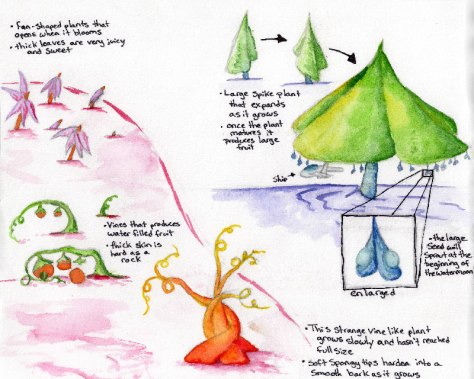
I would have never believed it unless I had witnessed it, but by the next morning new life was blossoming everywhere. The water was quickly receding into the planet and vegetation sprang up on every dry surface. From fan shaped fauna to creeping vines, color seemed to explode out of the rich red soil.
The most unusual plants were those who didn’t wait for the water to withdraw. Large green spikes rose out of the ocean and opened to reveal a canopy of fruit hanging from its underside. I could fly my whole ship underneath these great umbrellas. The fruit, I found, was a deliciously sweet.
As we flew, the Cloud Hoppers continued to display a wide range of colors. No longer did they hide themselves from the world. They sparkled like they were covered in a million brilliant rainbows. They ate and played under the watchful eye of the Life Moon.
END TRANSMISSION

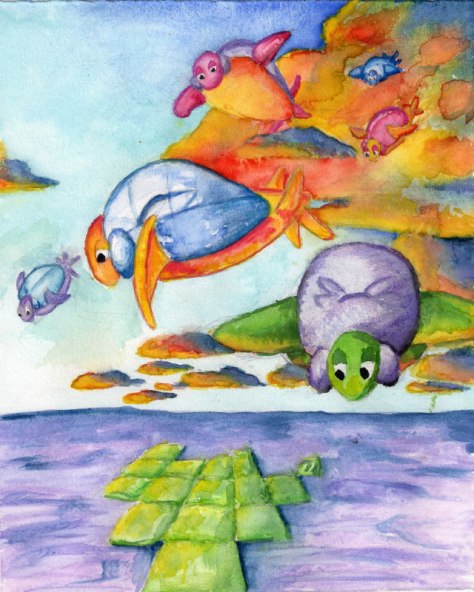
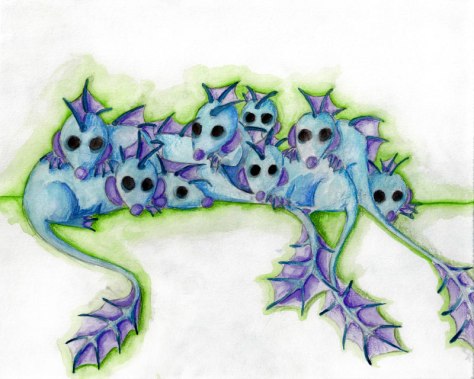
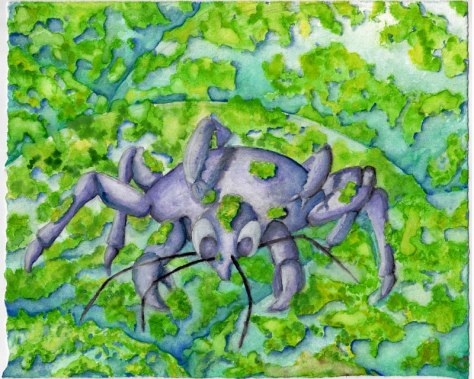
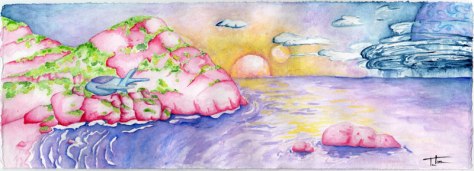
You must be logged in to post a comment.